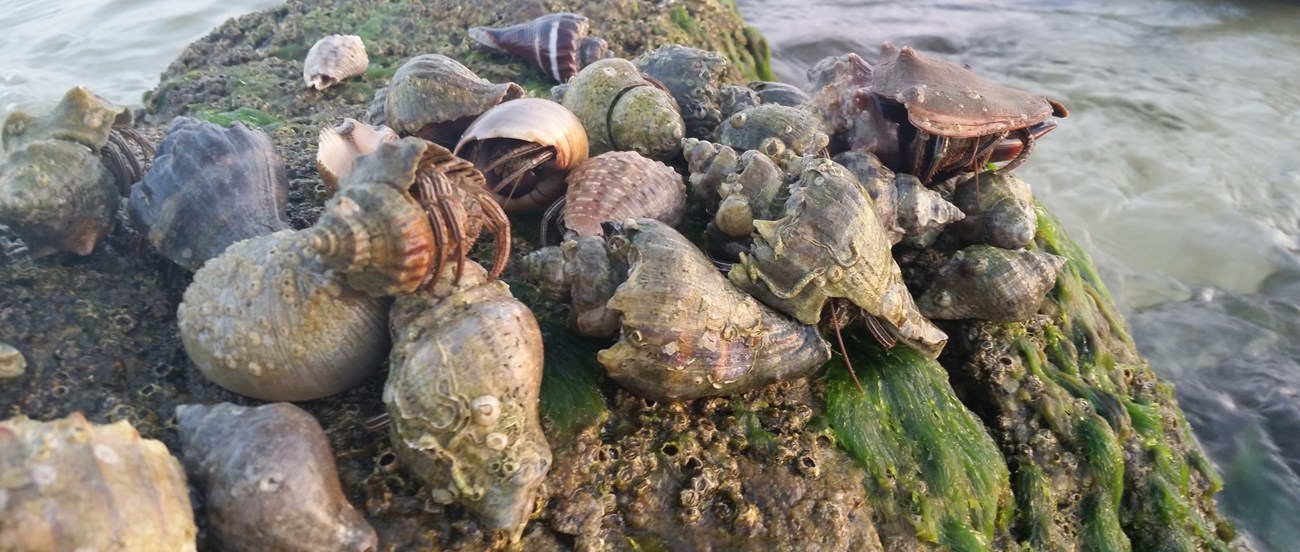
NPS Photo Found globally, hermit crabs are abundant at Gulf Islands National Seashore and can be seen on the shore during low tide or crawling around sea grass beds scavenging for their next meal.
Clibanarius vittatus, the species most commonly found in the park, is also known as the striped hermit crab. They inhabit a variety of shells, but are easily identifiable by the thin white stripes running down their legs. Aside from their stripes, the crab is reddish-brown in color with one set of equal-sized claws. The hermit crab, most easily defined as a crustacean with a soft rear end and small rear legs makes its home in the discarded shells of other animals. When threatened, hermit crabs withdraw as far as they can into their shells. Sometimes, the only body parts left visible are just the tips of the claws. Their shell protects their soft body parts from potential predators and exposure to the elements providing them with much needed safety. A hermit crab without a shell, does not survive for very long!
Despite what the name, “hermit crab” might imply, the striped hermit crab is a fairly social crustacean. They have been known to take on hitchhikers, or other small invertebrate animals which glue themselves to the outside of the crab’s shell. Most notable however, is their behavior when it is time to move. Just like a growing child needs new clothes, hermit crabs, too, outgrow their shells and require an upgrade. Unlike some other types of hermit crabs, striped hermit crabs have been known to “negotiate” on moving day, while other species are more likely to attack and forcefully evict other crabs from their shell.
Typically, when negotiating, a pair of striped hermit crabs communicate by tapping on the outside of each other’s shells to determine how they can both move in to better, more spacious shells. Occasionally, however, in a remarkable display of cooperation and patience these crustaceans will form a synchronous vacancy chain. When a small hermit crab stumbles upon a new, empty shell, it first checks the size. Upon discovering that it is too large, the crab sits and waits, sometimes for hours, as more hermit crabs appear, -each testing the empty shell for themselves. The waiting crustaceans then line up. From biggest to smallest, these animals create an assembly line of sorts, waiting for the “goldilocks crab,” or the crab who fits the new shell just right. Once this crab arrives, and vacates its current home, chaos ensues for those waiting as each makes a mad dash for their new shell. Hermit crabs have few natural predators, thanks to their hard outer shell. However, people have become an unlikely, and unwitting predator. Occasionally, hermit crabs are taken from the wild as pets. In more unfortunate circumstances, they are picked up by less informed beach goers who don’t realize there may be a crab inside.
Remember, when visiting Gulf Islands National Seashore, or any other beach, always check your shells twice for creatures living inside and leave behind any occupied shells!
|
Last updated: October 29, 2018
